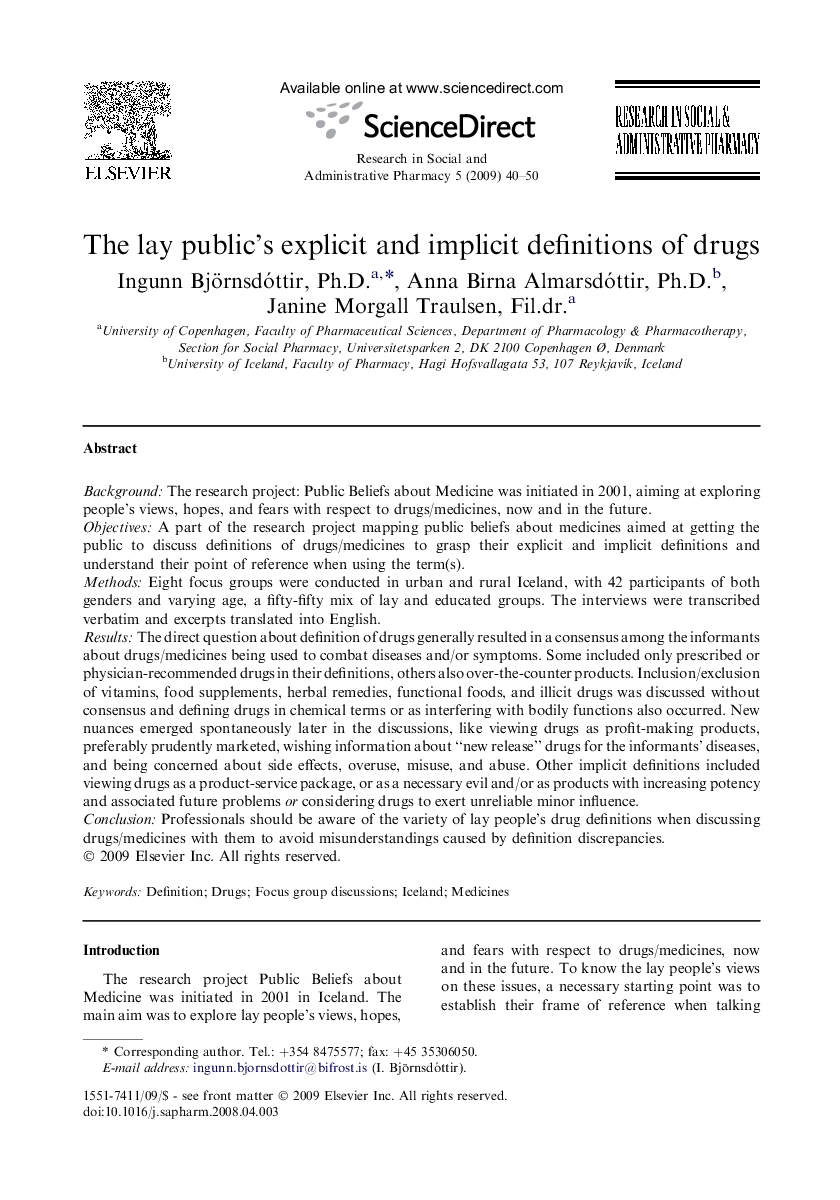| Article ID | Journal | Published Year | Pages | File Type |
|---|---|---|---|---|
| 2508944 | Research in Social and Administrative Pharmacy | 2009 | 11 Pages |
BackgroundThe research project: Public Beliefs about Medicine was initiated in 2001, aiming at exploring people's views, hopes, and fears with respect to drugs/medicines, now and in the future.ObjectivesA part of the research project mapping public beliefs about medicines aimed at getting the public to discuss definitions of drugs/medicines to grasp their explicit and implicit definitions and understand their point of reference when using the term(s).MethodsEight focus groups were conducted in urban and rural Iceland, with 42 participants of both genders and varying age, a fifty-fifty mix of lay and educated groups. The interviews were transcribed verbatim and excerpts translated into English.ResultsThe direct question about definition of drugs generally resulted in a consensus among the informants about drugs/medicines being used to combat diseases and/or symptoms. Some included only prescribed or physician-recommended drugs in their definitions, others also over-the-counter products. Inclusion/exclusion of vitamins, food supplements, herbal remedies, functional foods, and illicit drugs was discussed without consensus and defining drugs in chemical terms or as interfering with bodily functions also occurred. New nuances emerged spontaneously later in the discussions, like viewing drugs as profit-making products, preferably prudently marketed, wishing information about “new release” drugs for the informants' diseases, and being concerned about side effects, overuse, misuse, and abuse. Other implicit definitions included viewing drugs as a product-service package, or as a necessary evil and/or as products with increasing potency and associated future problems or considering drugs to exert unreliable minor influence.ConclusionProfessionals should be aware of the variety of lay people's drug definitions when discussing drugs/medicines with them to avoid misunderstandings caused by definition discrepancies.
